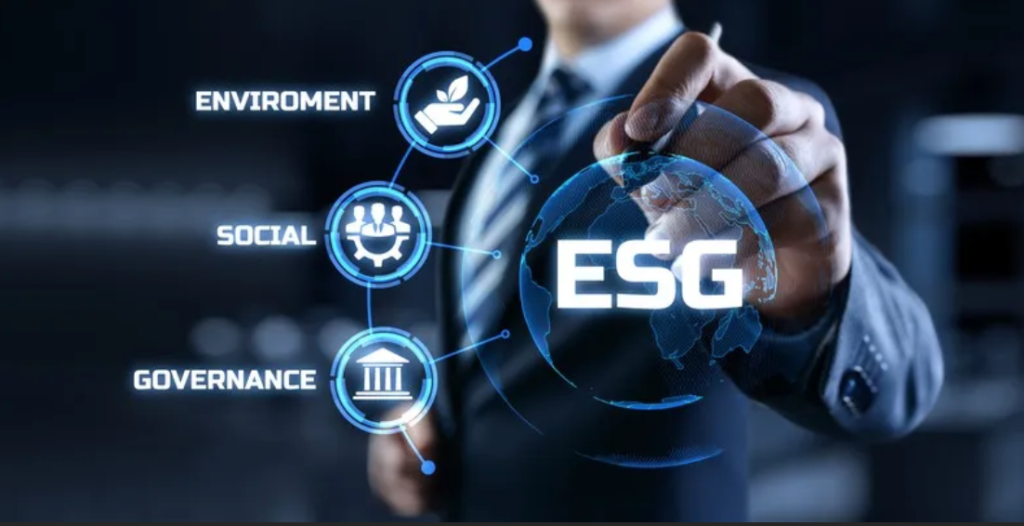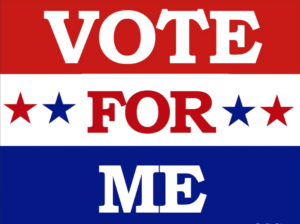

ESG and Your Schools


SEL+ESG=Social Credit System
How the Emergence of ESGs & the Imperative to Teach, Score, and Track Social and Emotional Learning is Setting the Stage for a Future Social Credit System
How does one measure subjective qualities in students like grit, perseverance, empathy and perspective-taking? These traits are difficult to quantify because the definitions of what those look like can differ from person to person. It’s not like an objective measurement of performance like a grade on a test, or if a student was able to run the mile in P.E. Those evaluations of performance have obvious markers of success. When schools get into teaching and assessing a subject like social emotional learning, however, whether or not a student achieves these subjective attributes is not as clear. A lot depends on who is defining terms like these and how they are going to be measured. It begs the question, “Why are schools teaching, scoring, and tracking social and emotional skills at all?”
Social emotional learning (or SEL) has been described as “the process through which children acquire the skills to recognize and manage emotions, develop caring and concern for others, make responsible decisions, establish positive relationships, and handle challenging situations effectively.” (CASEL)
The whole of society can agree that these are wonderful skills to have. In fact, most children learn those skills in their early years just from being a part of a family who has healthy, positive interactions that they observe and take part in on a daily basis. Granted, there are children that don’t grow up in a stable environment and SEL was originally brought into schools to deal with kids that needed specialized instruction in that area. That isn’t the case any longer. State School Boards (at the direction of the Department of Education) have decided that EVERY kid needs support in that area and they are teaching social emotional learning as a school-wide intervention. This has been spurred on by states having to report back to the federal government on non-academic factors (like the social and emotional health of their students) in order to receive federal money, like is required by the Every Student Succeeds Act (ESSA).
What has to be reported on, has to be measured through assessments, and what is assessed has to be taught through instruction. As a result, the Social and Emotional Learning industry has boomed. There has been a sudden influx of SEL curricula, like Second Step, being adopted by school districts as well as assessment tools like the screeners/surveys offered through Panorama Education which can be utilized to quantify and measure these subjective skills then create reports on individuals, curated groups or the school as a whole.
Underlying all of this curricula and assessments are the 5 Core Competencies set by The Collaborative for Academic Social and Emotional Learning (CASEL). They rate and review all SEL programs and are seen as the standard-bearer for SEL, creating the definitions for and ideal targets of social and emotional learning. Currently, the focus is on cultivating soft skills that are ideal for what the workforce desires. CASEL has been establishing Collaborating States Initiatives to create a community of practice for states across the nation whose shared goal is to “connect education and workforce policy through an SEL lens.” Essentially, State Boards of Education agree to align what social and emotional competencies students should be taught to what business/industry partners deem the “correct” ones. Accordingly, SEL instruction is integrated into K-12 programs, curricula, or related experiences to teach the competencies employers want the most, which are increasingly becoming less about academic skills and more about subjective, non-academic skills.
One of the most pressing needs of the workforce, according to the World Economic Forum, is Emotional Intelligence (EQ), which is defined as “the ability to understand, use, and manage your own emotions in positive ways to relieve stress, communicate effectively, empathize with others, overcome challenges and defuse conflict.” How will emotional intelligence be measured? Through the social and emotional learning scores of future candidates, collected as data that follows them from preschool through age 20 in statewide longitudinal data systems along with their academic scores. That data is gleaned from SEL assessments built around curricula that’s aligned to CASEL’s 5-Core competencies.
Except CASEL’s definition of social and emotional learning and their 5-Core competencies made a seismic shift in 2020. Their new definition, Transformative Social and Emotional Learning, has SEL now centered around a racial and “equity” lens. CASEL leaders believe that “racialized oppression was foundational to the establishment of the United States” and have adopted the Marxist Critical Race Theorist view that the U.S. is systemically racist.
As such, the new goal of SEL programs that align to CASEL’s standards is to groom students into thinking that the systems of society are intentionally built to be oppressive toward certain groups of people, and that they need to become agents of change (social justice activists) who want to overthrow those systems to make them more “equitable.”
SEL lessons, like those found in the program Second Step, manipulate the definitions of empathy and perspective-taking in their K-5 program to frame that being kind means you have to “do something,” which later becomes “choose a disruption strategy” by 8th grade. These disruption strategies encourage students to come up with concrete plans to advocate for causes related to race, gender and sexuality. Being that the assessments (like the surveys/screeners conducted by Panorama Education) also align to CASEL’s standards, they are measuring compliance to & students’ adoption of these Marxist values, attitudes, and beliefs, which will be scored and collected as data that reflects their “emotional intelligence.”
The ramifications of this are frightening. Forbes notes that hiring decisions that used to be made based on schools attended, grades, and the status of their last employment are shifting to more intangible qualities like “high EQ.”
6 Seconds, The Emotional Intelligence Network, seems to think that hiring people based on their “emotional intelligence” is the way to dismantle the systems that contribute to racism. One only has to look at how the National Association of Colleges and Employers at their conference were talking about Emotional Intelligence to see where all of this is headed. They say, “Emotional intelligence is shaped by experiences and reinforced through explicit instruction of social and emotional skills (Goleman, 2007). An excerpt from the Time for Learning: Race in the Workplace series by Dr. Shaun Harper and Damian Hooper-Campbell suggests leaders tackling race in the workplace cannot continue to choose avoidance as an inclusive hiring strategy. To drive inclusivity in the workplace, leaders must “move past good intentions and hold managers and executives accountable” in their hiring practices.” What it means for companies to “hire an inclusive workforce” will require much more than just making sure their hiring practices reflect a racially diverse populace, but also that the employees they hire display the soft skills of “inclusivity.” How will they be held accountable? Environmental Social and Corporate Governance Scores (ESG).
ESG is a new corporate accountability model built around their compliance to the demands of stakeholders, referred to as stakeholder capitalism. Their ESG score can be negatively impacted if their company doesn’t adopt “green”/environmentally sustainable practices or doesn’t donate to or reflect the messaging for what are deemed the “correct” social causes. Investors and banks have decided they will use ESG metrics as a tool to determine whether or not they should do business with a company. It is essentially a social credit system which forces companies to fall in line with the demands foisted on them or risk losing capital. It’s not a stretch to imagine that businesses’ ESG scores could eventually be affected by how emotionally intelligent their workforce is and will make hiring decisions in the future based on if a candidate’s “inclusivity score” is up to snuff.
Not to mention that organizations like the Gates-funded Data Quality Campaign and Jeb Bush’s Chiefs for Change are lobbying for linking student-level data between education and workforce agencies, via the statewide longitudinal data systems. They are asking Congress to lift the ban on a NATIONAL student database, creating a federal student unit record by passing the College Transparency Act.
What is going to keep anyone who has access to this information in the future from eventually using this social emotional “score”, like China’s social credit system to eventually red-flag and/or punish individuals for not agreeing with their views on issues like Climate Change, Gender Fluidity, or White Privilege? Will children’s social emotional or EQ score be able to disqualify them from colleges, or jobs, or a loan if they don’t meet their standard of “inclusivity”?
Don’t forget that in 2021 Biden called for the formation of a new, national credit reporting and scoring division inside the Consumer Financial Protection Bureau (CFPB). He wants to “create a public credit reporting agency (CRA) to compete with the three major credit bureaus and maybe one day replace them altogether. The Biden Plan to Build Back Better by Advancing Racial Equity Across the American Economy proposal suggests that a government-run CRA could fix a credit reporting system that frequently holds consumers back from becoming homeowners due to problems like credit reporting errors and racial disparities.” (Black & Lupini, President Biden’s Plan to Change Credit Reporting and Scoring, Forbes, 22 Feb 2021)
In the hands of those who value “equity” over ‘equality”, every individualist should shudder to think how this could be misused to target citizens who don’t align their thinking with the government’s. Will people who undergo EQ training be rewarded with lower insurance premiums or access to better interest rates? Will students who abstain or refuse EQ training suffer penalties?
Social Emotional Learning in schools is fueled by human capital impact investments and will work in tandem with ESG requirements for businesses to create a ‘compliant’ society. Students will be forced to either adopt the worldview offered to them through Transformative SEL or be faced with the consequences in the social credit system to come. It must be rejected.
More Articles


Don’t Ever Forget What
They Did To Our Children!

Books Requested To Be Removed From
Manatee School Libraries
Manatee School Libraries

Porn Books Removed By the Indian River School District

Manatee County
Administrator Candidates

